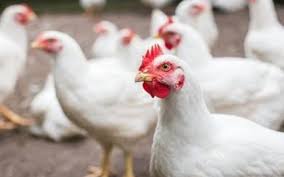 The Indian Broiler Industry: A Story of Integration, Trade, and Tradition
The Indian Broiler Industry: A Story of Integration, Trade, and Tradition
The Indian poultry industry is a vibrant fabric woven with threads of innovation, tradition, and resilience. At its core lies the broiler integration model, a marvel of vertical integration that has transformed chicken production. But the story doesn't end there. Beyond the integrators, the supply chain extends to bustling wet markets, where broiler traders and retailers bring chicken to millions of Indian households. This is a story of efficiency, challenges, and a delicate balance between tradition and modernity.
Broiler integrators are the backbone of the Indian poultry industry. They control every stage of production, from raising day-old chicks to processing and distribution of chicken meat. By providing farmers with chicks, feed, and technical support, integrators ensure consistent production and quality. However, this model is not without its complexities.
Financially, integrators operate on thin margins, with feed costs consuming 60-70% of their expenses. Volatile corn and soybean prices keep them on their toes, while disease outbreaks like avian flu can wipe out entire flocks overnight. Contract farming, while efficient, is fraught with challenges. Farmers, often small-scale and resource-constrained, rely on integrators for inputs and buyback guarantees. Pricing disputes, payment delays, and the risk of disease transmission create a fragile ecosystem.
Despite these challenges, integrators have driven industry growth, generating 15-25% ROIs and meeting the growing demand for chicken meat. But their success is only one piece of the puzzle.
• In India, over 90% of chicken is sold in wet markets, where live birds are slaughtered and sold fresh. This is where broiler traders come in. They are the unsung heroes of the supply chain, connecting integrators to retailers and ensuring chicken reaches consumers.
• Traders operate in a high-risk, high-reward environment. They purchase live birds from integrators or farmers, transport them to local markets, and sell them to retailers. Their margins, typically 5-10 Indian rupees per bird, are slim and highly vulnerable to price fluctuations. A sudden drop in market prices can turn a profitable day into a losing one.
• Logistics is another obstacle. Poor transportation infrastructure and a lack of cold storage facilities mean that birds often reach markets stressed or injured, reducing their value. Traders also face increasing competition from organized retail and online platforms, which promise convenience and hygiene. Yet, despite these challenges, traders remain indispensable, acting as a vital link between producers and consumers.
Step into any local market in India, and you will find broiler retailers at work. They are the final link in the supply chain, selling live or freshly slaughtered chicken to consumers. For many Indians, the wet market is the only place to buy chicken, and retailers are its beating heart (an estimated 1.5 to 2 million retailers operating across India).
Retailers operate on thin margins, earning 15-25 Indian rupees per bird after accounting for slaughter, waste disposal, and hygiene maintenance. Daily cash flow depends on foot traffic, which can be unpredictable. Rising health awareness among consumers is also shifting demand toward processed and packaged chicken, threatening the traditional wet market model.
However, retailers are adapting. Many are upgrading their infrastructure to meet hygiene standards, while others are exploring partnerships with organized retail chains. The wet market, with its cacophony of sounds and smells, remains a cultural institution, but its future is uncertain.
The Wet Market Dilemma: Tradition vs. Modernity
Wet markets in India are a paradox. They are vibrant, chaotic, and deeply rooted in tradition, yet they face criticism for poor hygiene, animal welfare concerns, and inefficiency. As the poultry industry evolves, the wet market stands at a crossroads.
• Can it coexist with organized retail and online platforms?
• Can it modernize without losing its essence?
These are questions that demand answers. The wet market is more than just a place to buy chicken; it is a source of livelihood for millions of traders and retailers. Any attempt to reform it must balance efficiency with inclusiveness.
Opportunities and Challenges Ahead
• The Indian poultry industry is poised for growth. Rising incomes, urbanization, and changing dietary habits are driving demand for chicken meat. The market is expected to grow at 8-10% annually, presenting tremendous opportunities for integrators, traders, and retailers alike.
• Export potential is another bright spot. India is emerging as a major exporter of chicken meat, particularly to the Middle East and Southeast Asia. Government support for export-oriented policies could further boost growth. • Technology will play a key role in shaping the future of the industry. From IoT-enabled farm management to blockchain-based supply chain tracking, innovations are changing how chicken is produced and sold. However, the challenge lies in ensuring that these advancements reach every corner of the supply chain, from the integrator's hatchery to the retailer's kiosk.
A Call for Collaboration and Innovation
The integrated broiler model, along with traders and retailers, forms the backbone of the poultry industry in India. However, the industry stands at a crossroads, facing challenges from price fluctuations, disease outbreaks, and changing consumer preferences. To thrive in this dynamic landscape, stakeholders must embrace collaboration, innovation, and sustainability.
Source: avinews.com


















